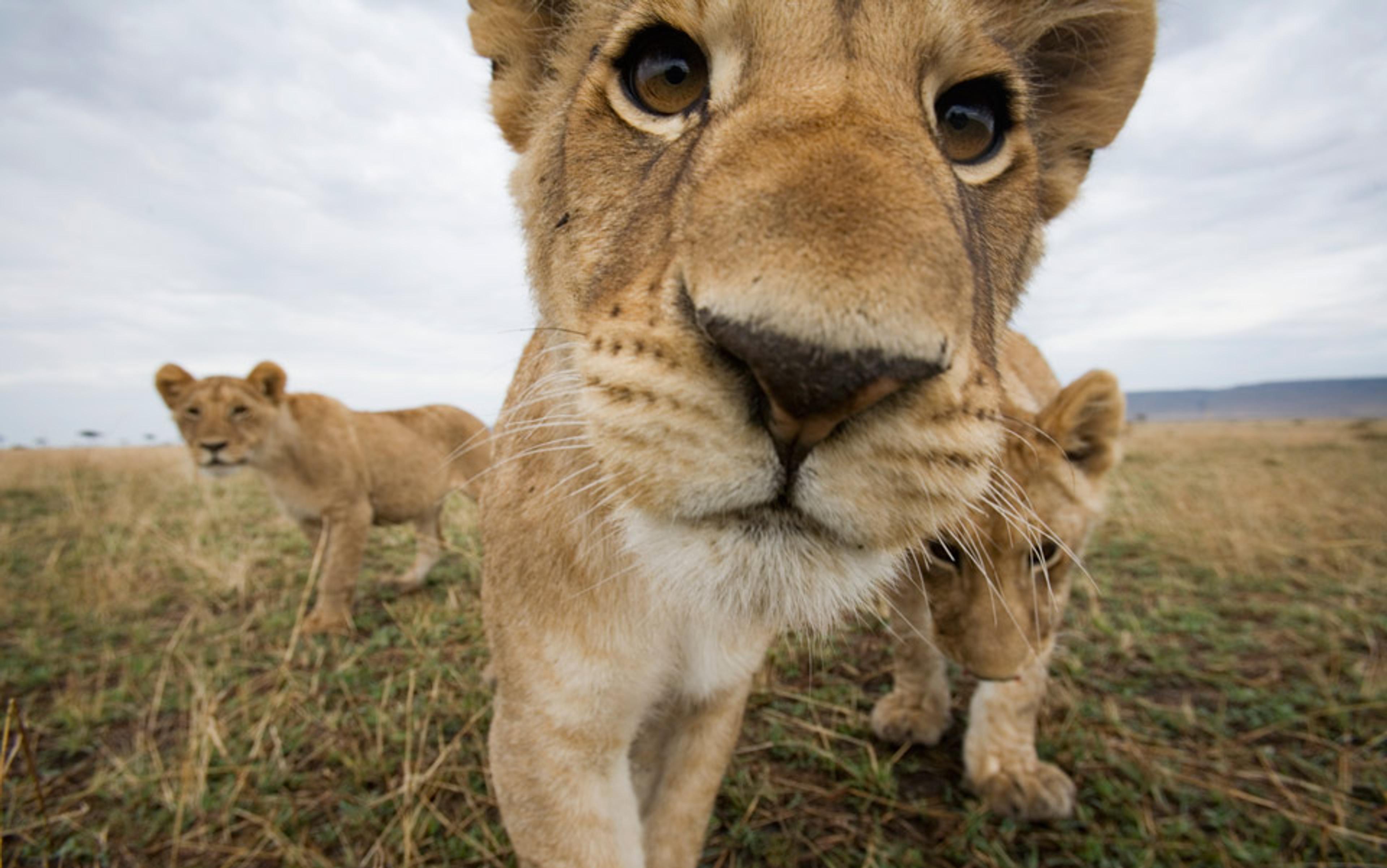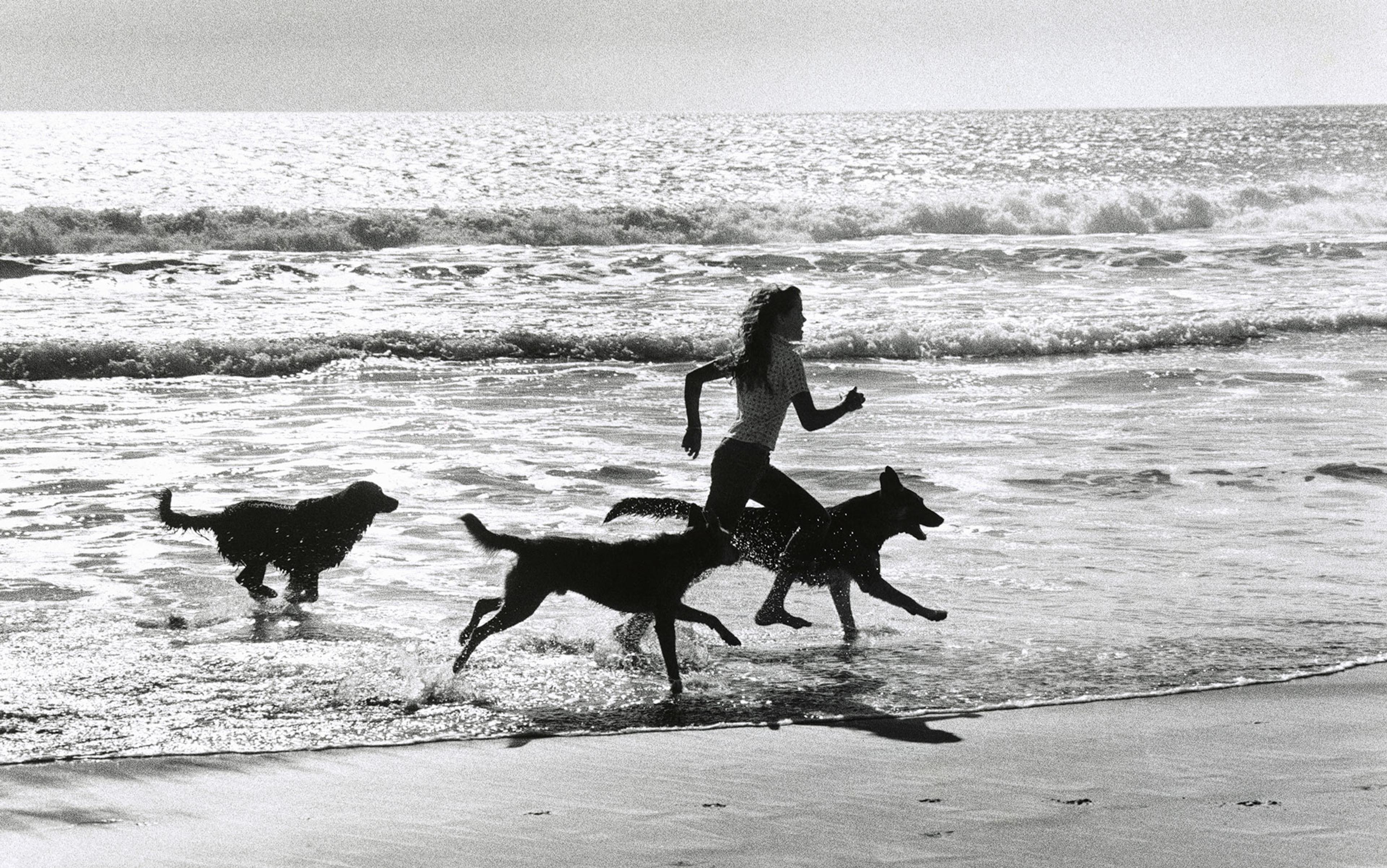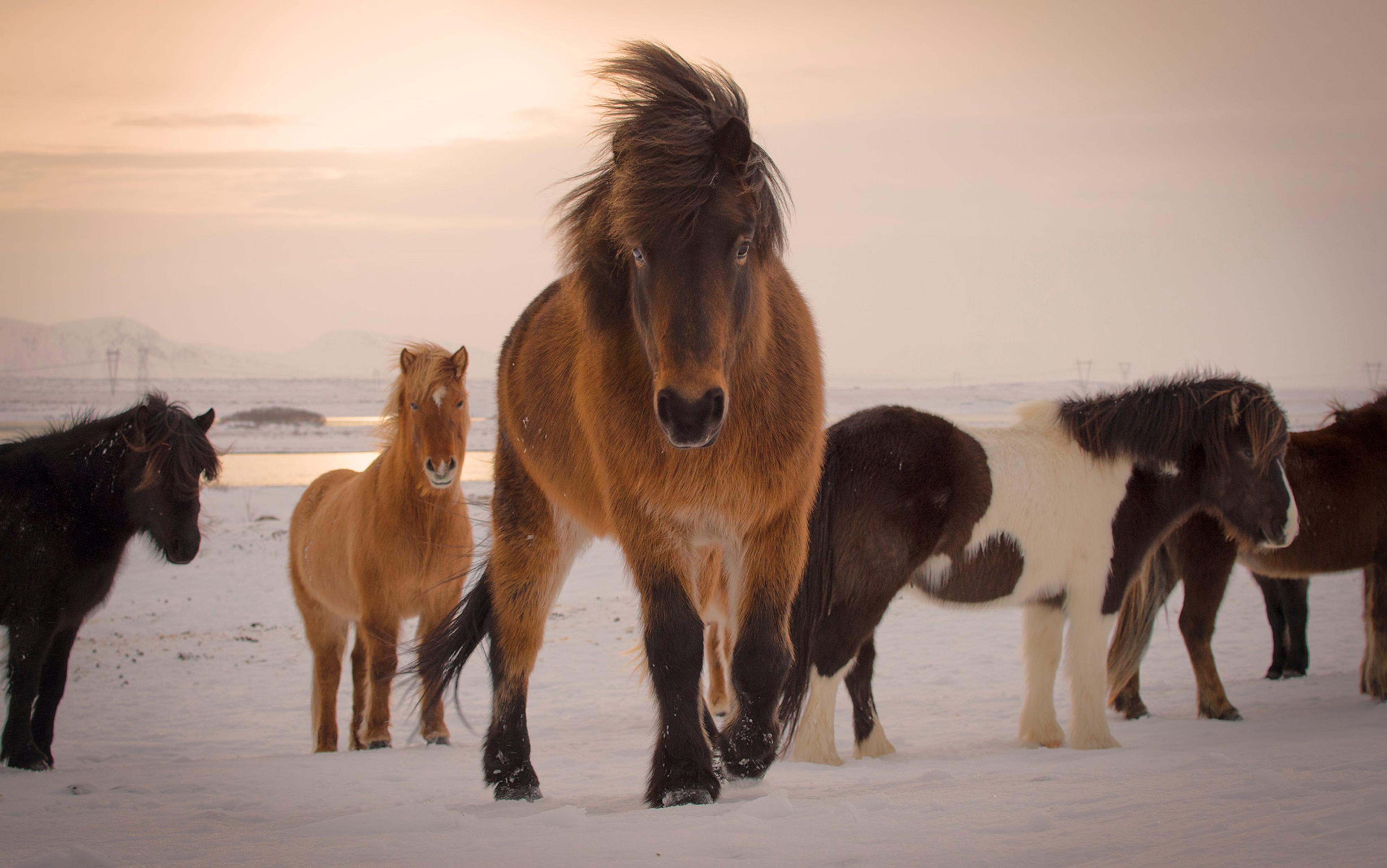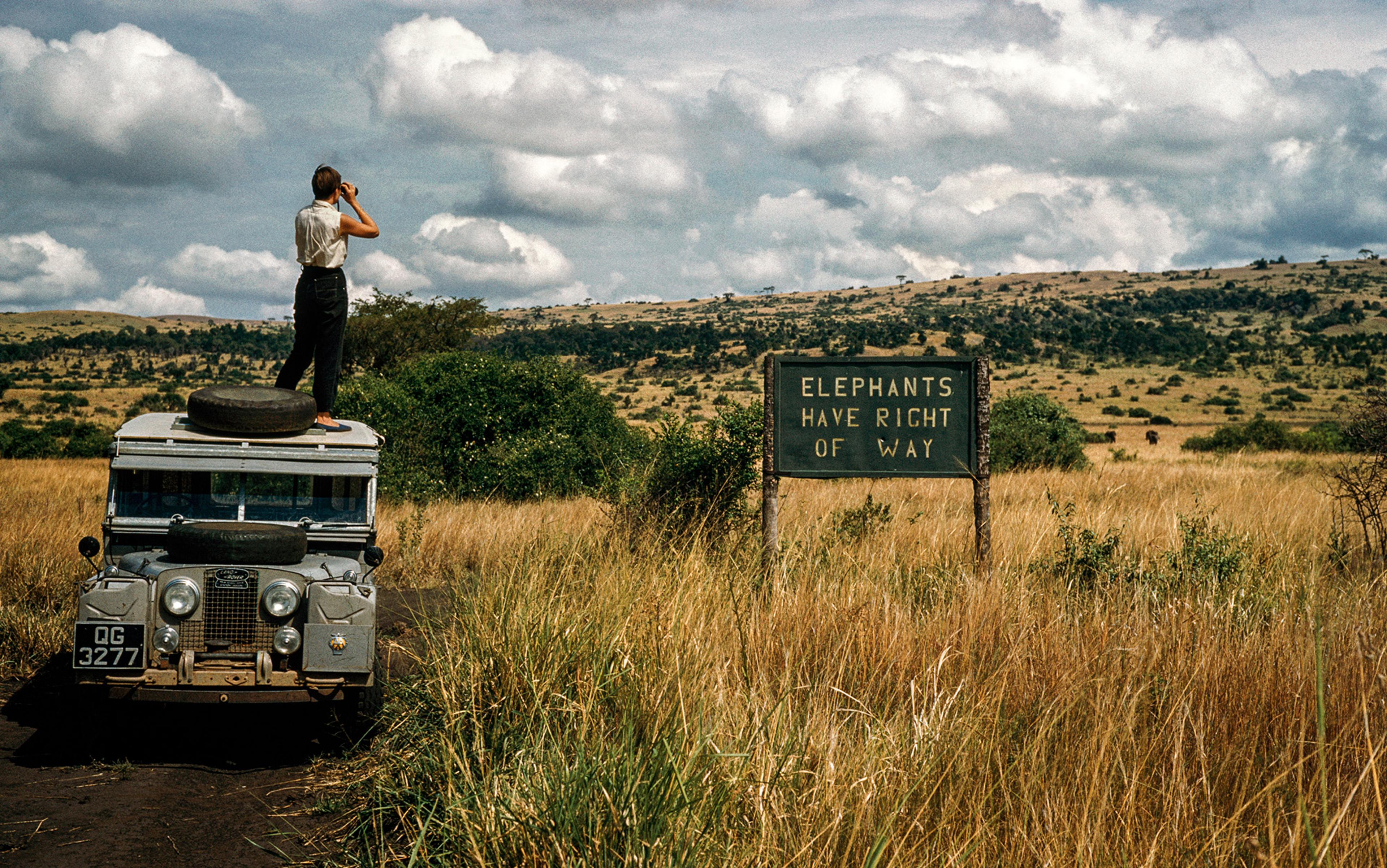Some of the most pressing moral issues we face today arise from how humans treat nonhuman animals, especially in farming and scientific experiments. High-intensity or ‘factory’ farming raises the biggest questions because of its sheer scale, and because routine practices there, once we look closely, often appear shocking. Vast numbers of animals spend much or all of their short lives in confined, sunless spaces, their experience a combination of stress, monotony and pain.
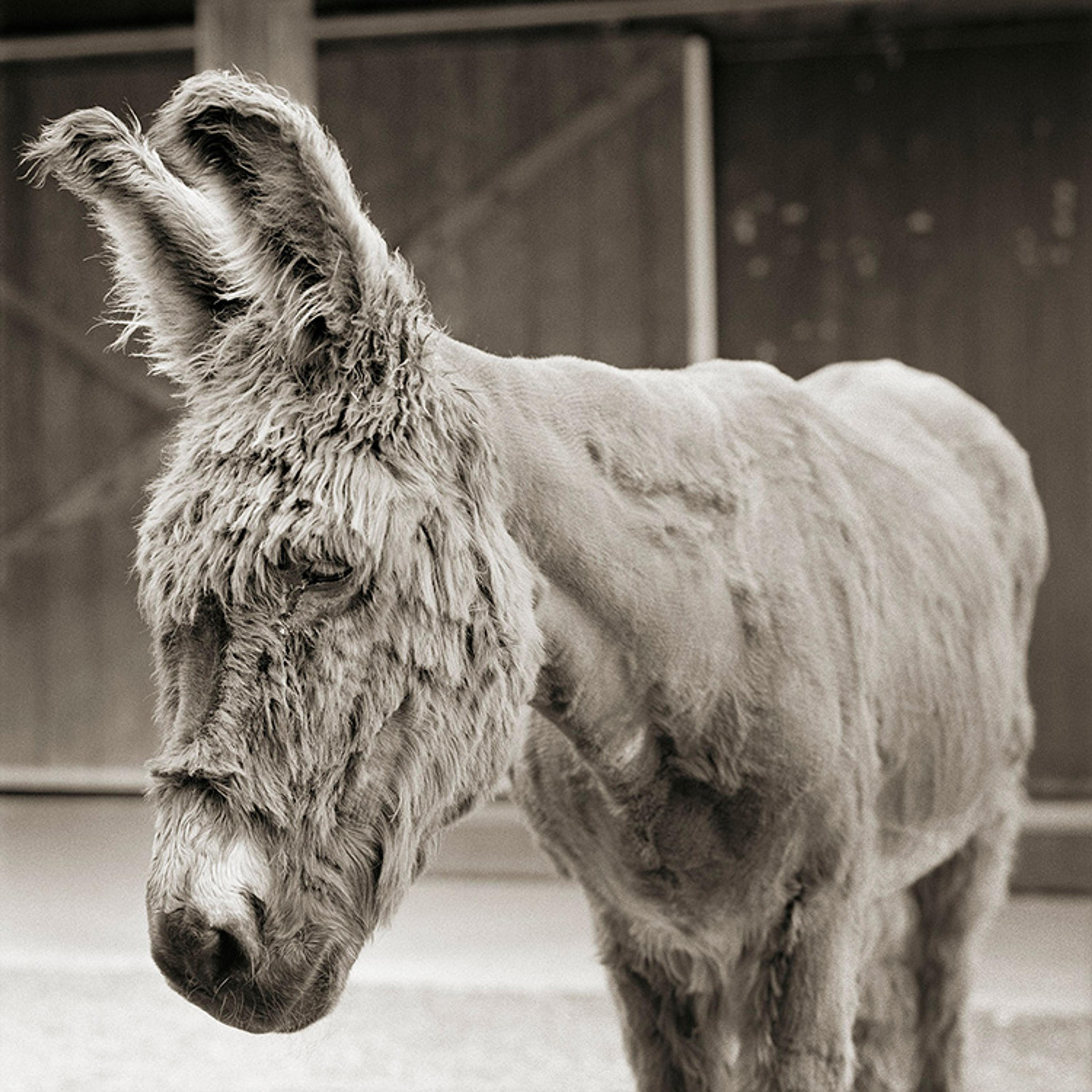
Babs. Donkey, aged 24 Image ©Isa Leshko
Is this wrong, and what kind of wrongness is it? These questions are often approached within a utilitarian framework, which holds that the reduction of suffering and promotion of experienced wellbeing comprise our basic goals in moral affairs. That view is readily applied to our treatment of animals, as seen especially in the work of the Australian philosopher Peter Singer. A rival tradition in moral philosophy derives from the Enlightenment philosopher Immanuel Kant, who held that our goal should not be getting better things to happen by any available means – as endorsed in utilitarianism – but acting in ways that respect the preferences and projects of others. A person should try to act, in any situation, in a way that would make sense if everyone followed the same rule that they do.
This emphasis on relationships gives rise to a somewhat different view of what we should do in many contexts, and there’s also a difference in what this philosophical theory attempts to achieve. Kant, and those following him, try to show that if we think hard about what is involved in making ordinary decisions in a rational way, we will realise that we are bound to respect the interests of others, as well as our own. Utilitarian philosophers have occasionally attempted something analogous, but not usually. Many utilitarians have gotten used to the idea that, if someone just isn’t moved by the suffering of others, not much can be said to turn them round.
Christine Korsgaard, professor of philosophy at Harvard, is a leading contemporary figure in the Kantian approach to moral philosophy. She thinks the Kantian view of morality is mostly right – right in outline, though best augmented with ideas from the earlier Greek philosopher Aristotle. In her book Fellow Creatures (2018), Korsgaard also extends the reach of Kant’s approach.
Kant himself did not care much about nonhuman animals and our treatment of them. He was concerned with people, with how people should treat each other. He thought that, insofar as we should care about animal welfare, this is because of the effects that cruel behaviours here have on us, on our characters. Korsgaard argues that, once Kant’s ideas have been reworked, we find that they apply to our treatment of animals more directly, in ways Kant did not see, and should lead us to change our behaviour in very significant ways.
This case is made not by way of a plea, an exhortation to ‘expand the circle’ of concern, a move we might make if we choose. The argument is supposed to have more force than that – it is supposed, roughly speaking, to compel. In a review of Korsgaard’s book, the US philosopher Thomas Nagel says that, if her view prevailed, ‘it would be one of the largest moral transformations in the history of humanity’.
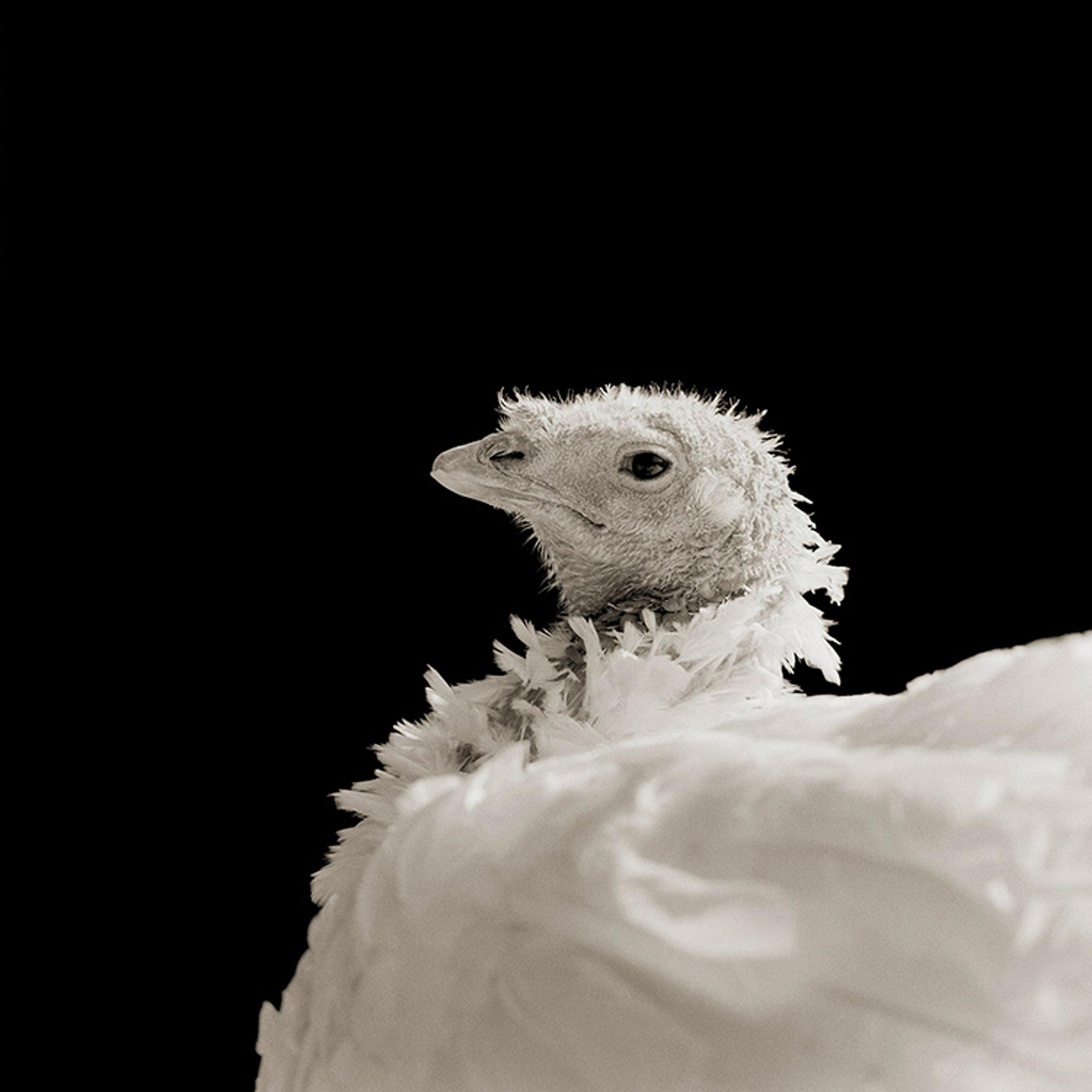
Ash. Domestic white turkey, aged 8 Image ©Isa Leshko
Korsgaard’s book is also much less technical and difficult than most work in this area. It has almost none of the numbing convolution of much writing in Kantian ethics. The book is aimed at an audience like this one, an Aeon audience, not just academic insiders. It is a clear statement by someone who has spent much of her life working on these themes, continually trying to strip away inessential details that might prevent us getting to the heart of the matter. I think that, once we work through it, we see that the main argument she offers does not work. I want to show this, and then turn again to those questions about animals. If Korsgaard’s Kant can’t lead us, are we left back where we were before?
Suppose one suspects that animals deserve better treatment, and should not be kept on those factory farms – or, in the more accurate term often used within the industry, in ‘confined feeding operations’. How can we decide if this is right? One way is to find something in their lives – suffering, stress – that we can recognise as just bad, and try to reduce it. Some goings-on in the world have a bright glow of goodness, it seems, while others are infused with a kind of metaphysical gloom. Korsgaard takes what looks like a harder road. Value does not exist as a sort of aura surrounding things in the world itself; value comes from valuing. It comes from the fact that people, and perhaps agents other than people, seek some things and avoid others. Without valuers, there is no value.
If we start here, we face the fact that valuing can be based on all kinds of bias, caprice and distortion. To be valued (by someone or something) is surely not enough to be worthy of it. Korsgaard wants to resolve this by looking more closely at how we act and make decisions in everyday cases – not when we are trying to be especially kind to others, but generally. A full understanding of some of our own ordinary choices will push us, she thinks, to take seriously others’ interests and goals. The Kantian idea is that a kind of fulcrum is provided by your own actions, by your sense of yourself as a decision-maker who acts for reasons. This sense of your own reasonableness can lead you to treat others in a way that respects their own preferences – not to go along with everything they might want, but to have a basic respect for what they are trying to do. For Kant, the ‘others’ whose goals we come to respect are other people. For Korsgaard, they include animals as well.
The argument starts simply. When we do ordinary things – decide what to do with our weekend, for example – we usually take ourselves to have reasons for doing what we’re doing. Suppose you made a choice while knowing that there is no reason you could offer for it. Then you are, in a way, incoherent, not a genuine agent.
You might resist at this early step, and say: ‘I just do what I want at that moment! I don’t care about the deeper coherence of my actions.’ How bad is that? Maybe not that bad – we should not overstate the case. But there is a point here. When we don’t think that reasons can be given for what we’re doing, something important is lacking in our choices.
Kant’s aim was to justify a respect for other people. Animals don’t count
So you think your choices have reasons behind them and, if these reasons are good ones, then you think that others, in principle, could see this, too. You recognise in yourself, and think that others should recognise in you, a choice aimed at something worth seeking, and a choice by someone who can make that call. This means that what you are after is ‘good’ not just in a sense confined to you, but visible to everyone. Once the goodness of your choice is visible to everyone, it is a kind of absolute goodness – a goodness that anyone could recognise.
Does this view ignore the obvious fact that different people want different things? What seems good to you need not seem good to me. The idea is not that you think that everyone should want the same things as you, or the idea that your valuing something should always make others override their own interests. But, according to Korsgaard, your valuing something does give you, and what you value, a status that others should take into account. The fact that you value something in this way makes it part of what she calls ‘a shared or common good’.
So far, all this is about how things look to you, as you make ordinary choices. But you can see that other people are like this, too. In others, we can see the same kind of pursuit of goals. Just as the reasonableness of your choices takes your goals into the realm of a shared good, the same applies to what they choose. A respect for our own rationality leads us to see other people, also, as making choices that we should respect.
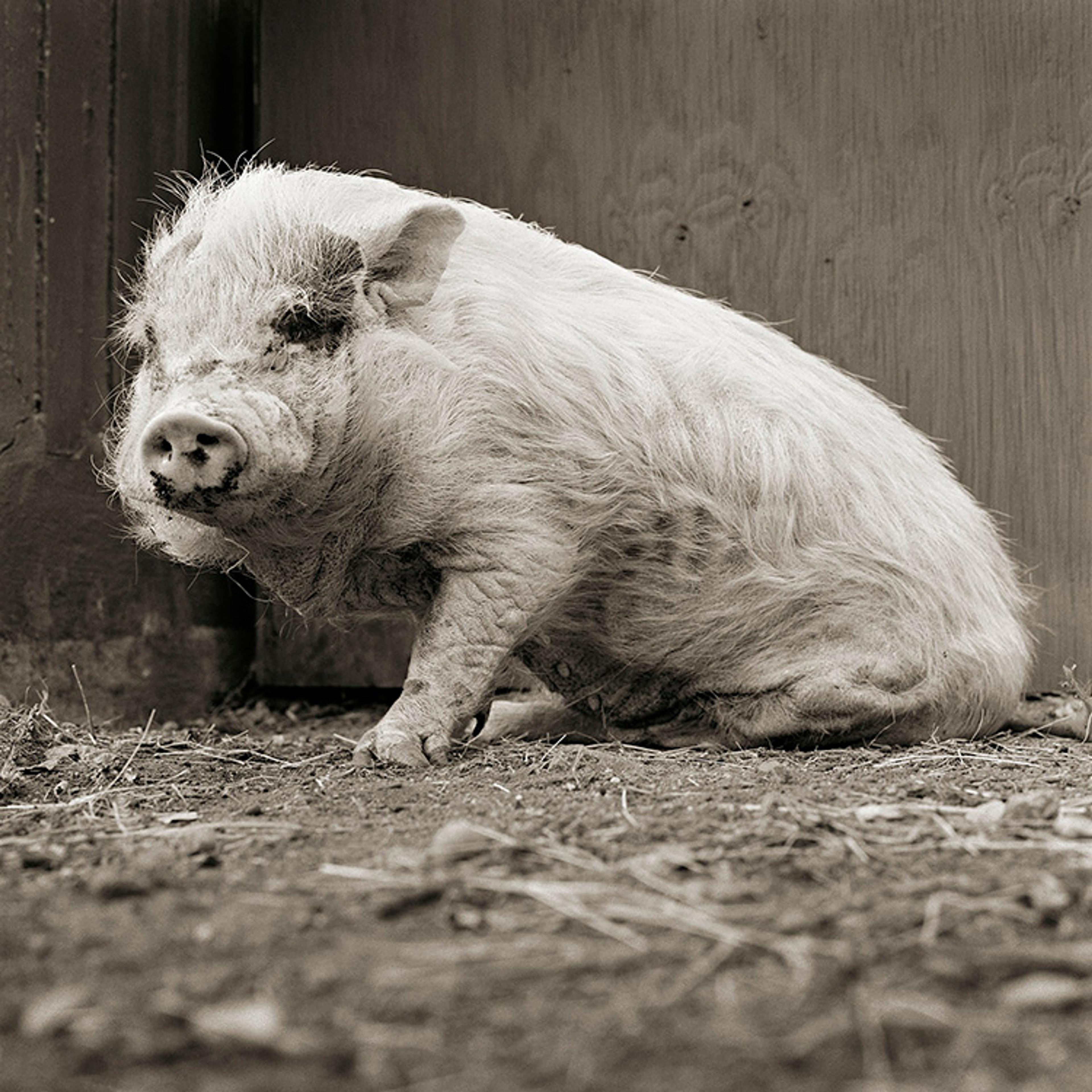
Violet. Potbellied pig, aged 12 Image ©Isa Leshko
Kant’s aim was to justify a respect for other people. Animals don’t count. They don’t make choices in the way we do, and can never become part of a community where these principles of reciprocal respect apply. Korsgaard, however, thinks this understates the power of the Kantian approach. Though other animals can’t make choices in our reflective way, we can see that they do pursue what is good for them: we humans ‘are not the only beings for whom things can be good or bad’. In this case, too, the goodness they seek becomes more than mere goodness-for-them. It is also an absolute good, part of a universally shared good. And we are committed (already, from our own case) to respecting that sort of quest. We should then change or abandon a great many ways we treat animals, rejecting not just the excesses of high-intensity farming, but humane farming where death might be painless, and animal experimentation in research even when the work might, because of its benefits, pass a utilitarian test.
Some of what might be questioned here is Korsgaard’s extension of the Kantian argument to animals – the idea that their very different choices still aim at something we should see as a shared or absolute good. But I think the more basic problem is found at a much earlier stage in the argument, in the attempt to get our own choices to play that fulcrum-like role.
Let’s return to those ordinary choices that set the story into motion, and work through things again. I, after some thought, decide I want to do X. I think I have good reason. I think that others will see that it makes sense for me to do X. They will see that, if they were in my shoes, they would want to do something similar – more accurately, not if they were in my shoes, as it shouldn’t matter which particular person is involved, but in shoes like mine. This makes my choice defensible. In a way, the goodness of what I am after, along with the reasonableness of what I am up to, is visible to everyone.
So far, though, there is no reason why I should expect them, in very different shoes, to put any value of their own on what I am doing. They will endorse it, I think, for anyone in shoes like mine, but there’s no reason yet for them to endorse it beyond that. You can have a respect for my good sense without being motivated to help me. You might choose to help me, if you are OK with what I am doing or just a benevolent sort of person. But you might not, and your refusal can be both reasonable and compatible with my reasonableness.
Korsgaard says at one point, when talking about these ordinary choices, that we not only think that we have good reason to pursue the projects we do, but also ‘expect others not to interfere with that pursuit without some important reason for doing so, and even to help us pursue them should the need arise.’ In reply: I don’t expect this. I hope for it, am pleased when it happens, and am also glad to live in a society where interference is discouraged. But I don’t think that, just because another person will see that what I am doing makes sense for someone in a situation like mine, they will think they have reason to help me. Their situation, again, is different.
Some trouble comes from the word ‘absolute’, which Korsgaard uses when talking about the important kind of goodness. She does not mean absolute in a lofty sense. Something is absolutely good when it can be recognised as good by everyone. But there are two ways something can be recognised as good by everyone. It might be recognised, by everyone, as good for anyone who is in shoes like mine. That does not mean it is recognised as good in a further sense where it becomes part of a shared good, a good that everyone has reason to pursue.
It’s an attempt to leverage the inevitable sociability of human life into respect for the goals of others
Korsgaard says that, given how we make choices and defend them, ‘we think that our achieving our ends is good from the point of view of others and not merely good-for-us.’ It is, indeed, often visible from their point of view as good for someone in a situation of a particular kind, but so far that’s all. There is a context-relativity here, a relativity to circumstances, that keeps recurring and does not go away.
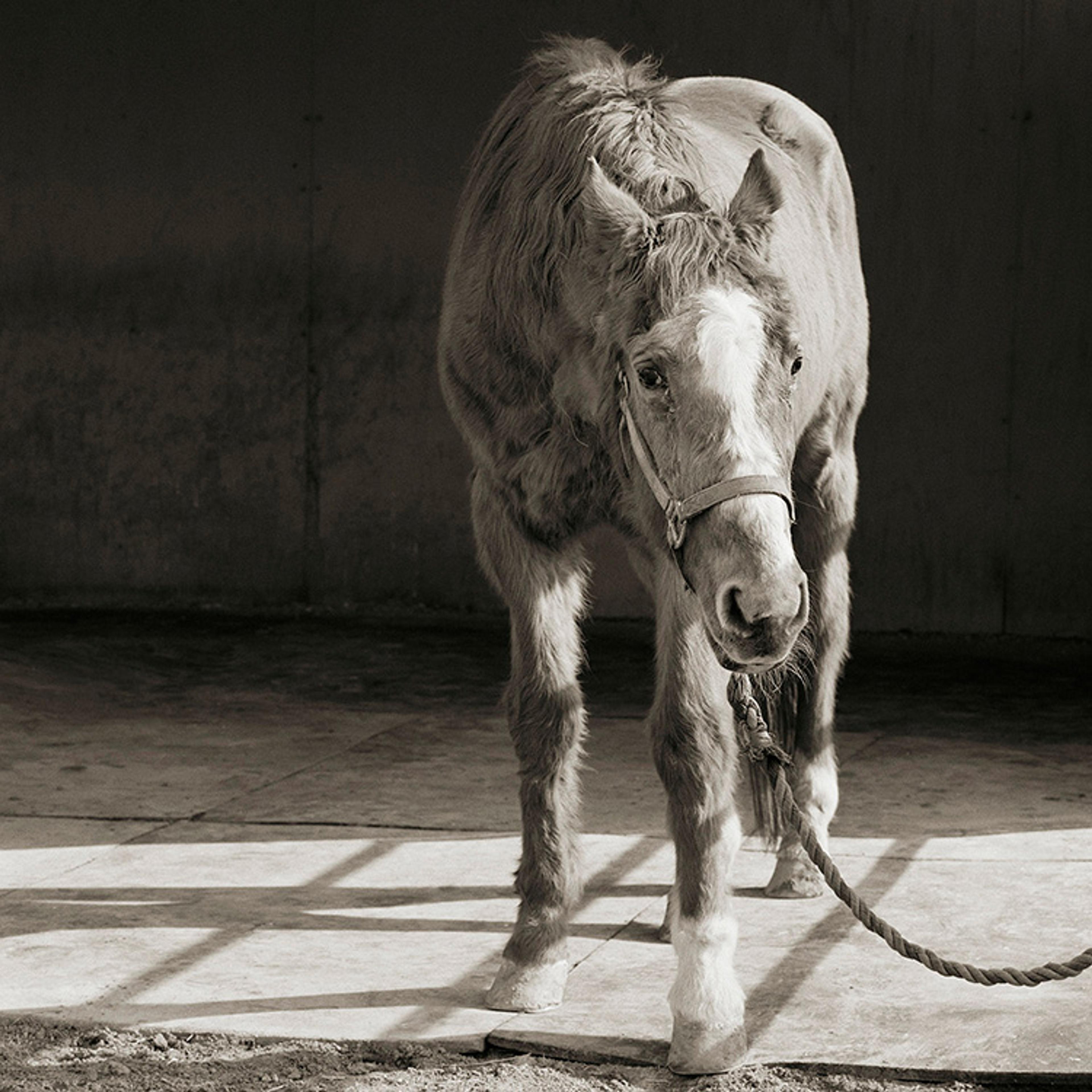
Handsome One. Thoroughbred horse, aged 33 Image ©Isa Leshko
This is not working so far. Perhaps there are other ways to make the case. Korsgaard here is treading one route through a blizzard (perhaps a hailstorm) of argument in Kant’s own writings, and she is downplaying a lot of grand but less plausible moves he makes. (Even I, very far indeed from this project, sometimes think I can glimpse, through the blizzard or hail, the castle that keeps Kantians going.) Korsgaard is reorganising and refining the ideas that seem most likely to get us somewhere. So let’s try various options. Maybe a wrong turn was taken with the idea that when you think your projects are reasonable, you treat your goals as part of a shared good. Might it be enough that you think you have good reason to value something, and you recognise that others do, too? Then other people might have reason to respect your valuing, and you might have reason to value theirs, even though what each person values is quite different. However, even if others have reason to respect your good sense, given your situation, if they don’t see what you value as part of a shared good, then they have no reason to help you. The idea that the goals a person reasonably pursues become part of a shared good really does matter here, and we are not getting to it.
Another way to handle the situation might be to say that the ordinary choices that get the story going are special ones, or are restricted in some way; perhaps they don’t include choices intended to impede others. If I want other people to respect my choices, these should be choices that include some respect for them. In an earlier article about Kant and animals, Korsgaard considers a restriction of the argument to goals such as avoiding suffering. In the case of these goals, the attitude we each have shows that we regard the goal as objectively good, and hence good when the interests of others are at stake. Alternatively, or as well, the kind of respect we should give each other, based on all this, might be very minimal – perhaps it’s just that each of us should not interfere in what others are doing without good reason.
That’s all fine, but none of it makes much difference. We can make all these concessions – only considering goals that aren’t selfish and disruptive, only looking for minimal respect from others – and there’s still no leverage being gained here, of the kind that should get other people on board with your projects, or you on board with theirs. The picture of how we are supposed to end up behaving does look sensible when we apply it to non-interference and preventing suffering. Surely that sort of thing is OK? Yes, that sort of thing is OK, but not because of a story showing that you have to think something like this in order to make sense of your own ordinary decisions.
Part of what is going on is an attempt to leverage the inevitable sociability of human life into respect for the goals of others. We are indeed social beings; there is a good deal of fantasy and myth in the idea of a wholly hedonistic and ego-centred person. But that does not tell us what attitude to have to the projects of those around us. The mathematical field of ‘game theory’ is partly about the fact that, while the outcomes of our choices are usually dependent on what others do, we only sometimes have incentive to act in ways that maintain the sociality we all benefit from.
The Kantian project was an attempt to turn some hidden assumptions underlying ordinary action into something that fosters a kind of human moral community. For Korsgaard, this leads to a further moral revolution, with every supermarket transformed. Kantian ethics, especially as Korsgaard handles it, is a vast construction erected on a tiny point, on miraculously little. But no miracle is possible here.
Where do we go from here? If we give up on arguments like this, what comes next? I’ll sketch some outlines of another view, beginning, as Korsgaard does, with general ideas about choice, valuation and moral concepts.
In trying to understand the business of moral thinking and debate, philosophers have tended to work with alternatives that have a kind of tidiness. Are we uncovering and describing a special set of facts? Are we instead expressing emotional responses, or engaged in elaborate attempts to direct others’ behaviours – prescription rather than description? These are typical alternatives. Behind some of these debates is a deeper divide between a picture in which we are discovering values and a picture in which we are constructing them. Each side feels some pull from the other, and views often try to straddle or encompass both (the Kantian view holds, in effect, that we create values but there is only one way to do it that makes sense).
A different view is that the whole practice of moral thinking is more mixed-up than these pictures suggest. Roughly speaking, we’re working out what to do, how to live, what policies we will encourage and discourage in ourselves and others. The activity is forward-looking in its function. But this sorting of ways we might do things is responsive to a wide range of factors – factual, emotive, structural.
A genealogical perspective can be helpful. Human projects, from many thousands of years in prehistory, have been social projects. Humans work together, and also try to influence each other – appraising, influencing, discouraging. Standards of behaviour, implicit and explicit, are largely responses to social life, especially to the benefits of cooperation and the temptations that lead to cooperation breaking down. Norms of this kind also become entangled with standards aimed at other kinds of behavioural regulation – ideals of purity, for example, as the US social psychologist Jonathan Haidt has emphasised – that are only indirectly related to cooperation and social order.
Parity claims depend on which similarities between cases are seen as important and which are irrelevant
What begin as tacit expectations about others’ behaviour can later become explicit rules, stated and decreed. These then become enmeshed in further forms of regulation, with the rise of more hierarchical and coercive societies, priestly castes and theologies. But they can also be brought into contact with more subversive human capacities of reasoning and reflection. Theology might be sidelined or abandoned, and new conceptions of society can arise. Changes to our picture of the world won’t dictate new rules of behaviour, but can affect them, along with changing economic arrangements and the social problems of the day.
As moral responses become integrated into intellectual reflection, one thing that can affect them strongly is an ideal of parity: don’t treat similar cases entirely differently. If we treat this situation as bad, then we should do likewise here, as the two cases are similar in the ways that look important. When parity is massively flouted, rules look arbitrary and cannot be defended in debate. Parity is central to the pursuit of fairness, which isn’t everything in moral life, but is one major element.
Through this process of change, there remains a good deal of freedom at both individual and societal levels. We can choose how smoothly integrated with the rest of our thinking we want our moral orientation to be – some people don’t mind a fair bit of separation. Parity claims are dependent on which similarities between cases are seen as important and which are irrelevant; they depend on our rather flexible sense of what is similar to what. As another Harvard philosopher, John Rawls, argued, we are also continually balancing the appeal of general principles with the strong reactions we have to individual cases, and that balance can usually be achieved in a variety of ways.
That is my rough picture. The point of the activity of moral judgment is forward-looking – working out what to do – but the ‘inputs’ at work are diverse, sensitive to factors such as parity and consistency, as well as empathy, reverence and more. The claims we make have a form that allows them to be applied retrospectively as well as in planning and persuasion, and the ‘moral’ or ‘ethical’ is not a category neatly marked out from the rest of the larger project of trying to work out what to do.
How does all this apply to questions about our treatment of animals? The situation is one where we are looking for ways to extend a framework that has been shaped primarily as a human social tool, into an area where we have new kinds of relationships to think about. The problem has become urgent because of the building pressure of parity arguments, because of new knowledge about what animal experience seems to be like, and perhaps also because of the extraordinary levels of control we have acquired over many animals in recent times, giving rise to a heightened sense that something has gone wrong.
When we try to resolve all this, and work out what to do, is it reasonable to expect that a single best course of action will become visible? It might – I’d not rule this out. But this might instead be a situation where we find a number of different reasonable paths forward, different ways to resolve the tensions. Classic moral theories such as utilitarianism, with definite rules and ways of ranking options, will be included in these paths, along with others a little more unkempt.
These paths will yield different pictures of what the ideal might be, the best place we could end up. Should we retain and reform animal farming, or end it altogether? One vision of the ideal, extreme but seriously considered, is for humans to largely disengage from the lives of other animals. In this view, avoiding exploitation is a central goal and, although not all forms of entanglement of our lives with theirs are exploitative, a great many are. The ideal is then to let them be, with very few exceptions. Korsgaard’s view tends in this direction, though with companion animals explicitly ruled in – perhaps a slightly unkempt aspect of her own view. A different goal is for us to retain much more involvement in animal lives, including farming, but find ways to do this differently – to use our unique human powers in a way that is good, on balance, for both sides.
Suppose we do get used to the idea of a range of reasonable paths in this area. Is it possible to recover, within a framework like this, the idea that the worst excesses and cruelties – including some that are common in modern farming – are a kind of abomination or, in Korsgaard’s terms, a ‘moral atrocity’? Are there practices that we just have to change? If so, where does that ‘have to’ come from?
Sentience itself very probably exists in borderline forms and by degree; it is not a matter of yes or no
I do think some cases have a special status, which can be described as follows. The process of rethinking and reform I’m describing here can go in a number of different directions, but some kinds of mistreatment of animals are special, because on nearly any reasonable extension of our thinking, taking into account the facts on hand, we would reach the conclusion that we should stop doing these things. The fact that there is a good deal of leeway or elbow room in how concepts formed in human interaction might be extended to animals, and what our ultimate goal might be, does not always leave us unable to draw strong conclusions about particular cases. A conclusion such as the need to end factory farming can be a point of intersection or convergence across many different ways of extending our practices of moral evaluation.
The paths also diverge. The US photographer Isa Leshko’s beautiful book Allowed to Grow Old: Portraits of Elderly Animals from Farm Sanctuaries (2019) contains what the title suggests: old pigs, chickens, cows, sheep – animals we rarely see at old age, as most farmed animals die very young – along with some horses and dogs, which we are more used to at this stage in life. The images are moving, and the animals seem to have a quiet dignity.
The situations pictured also contain an incongruity to reflect on. The animals are in many cases presented as escapees from human misuse, which they are. But dignity in old age will also rather rarely be a feature of animal life in the wild. Some wild animals can approach this station – old sea turtles, serene in the water column, are beautiful to encounter in a way reminiscent of Leshko’s photos. Some birds and fish can get very old. For most mammals, it’s harder, especially relatives of the ones in Leshko’s book. For those animals, the possibility of a life of the kind pictured – reduced in powers, but at peace – is a product of human choice and intervention. This is the best side of the ‘custodial’ relationship that can exist between humans and nonhumans.
The point is not that these rare peaceful sanctuary lives might override the evils of the intensive farming operations where other animals are found. It’s coherent to claim that farming can’t be reformed, except on very small scales, and an ideal future might hence not contain animals of these kinds at all. But the photos do show what can happen when human powers are used differently, as they might be on much reformed farms. These animals are a pointer to the idea of better, highly engaged relationships.
People sometimes dismiss arguments for ameliorating the lives of animals because these ideal outcomes are unclear. And some of the hard questions in this area will stay hard or get harder. Views presently looking to change our relationships with animals often focus on the category of sentience, where some animals are inside this category, deserving protection, and others are outside. But sentience itself is very probably something that exists in borderline forms and by degree; it is not a matter of yes or no. Something part-way to sentience – hemi-demi-sentience, as the US philosopher Daniel Dennett would call it – is probably present in vast numbers of tiny invertebrate animals around us. How are concern and protection to be conceived in cases like those? But the fact that we can’t tie up every question does not prevent a proactive approach to issues that many paths forward from here will agree on.
Once we accept that extensions of concern to other animals are not forced on us by the nature of reasonableness itself, as Korsgaard hoped, there is a temptation to say that everything here is a matter of feelings and emotional responses. There is more to it than that. We can choose to seek a greater measure of consistency, as well as benevolence, in our overall outlook. We have made these moves in the past – setting out from habits and norms that function in ancient forms of social life, becoming encrusted with theology and coercion in many cases but sometimes breaking free, integrating with our evolving picture of the world and what we are about, and guided, fitfully and fallibly, by parity. We can take the process further, if we choose to, and rethink our relationships with animals.


